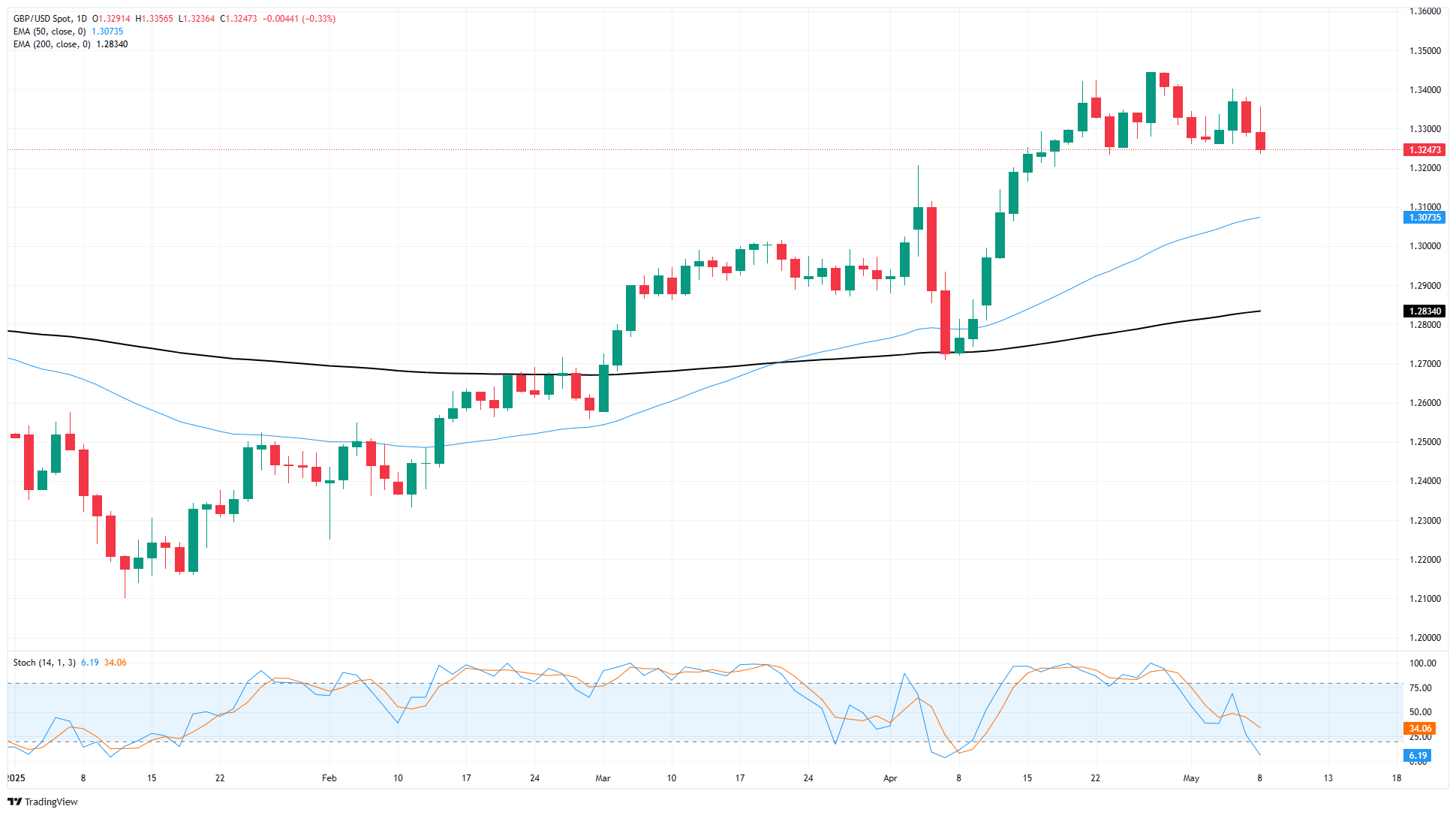- GBP/USD reversed early gains to fall another 0.34% on Thursday.
- The BoE delivered a broadly expected quarter-point rate cut.
- Support for the Pound Sterling evaporated as global markets pivot toward trade headlines.
GBP/USD kicked off Thursday with an early spat of gains, fueled by the Bank of England (BoE) delivering the market a widely-anticipated quarter point rate cut. However, bullish momentum behind the Pound Sterling evaporated quickly as markets pivoted toward trade headlines from the United States (US). Investors are hoping for quick progress on the US making trade deals that will allow it to climb down from its own self-imposed tariff stance.
Market sentiment pinned firmly on the high side and bolstered the US Dollar (USD) after the Trump administration announced an impending trade deal between the US and the United Kingdom (UK) that will see the UK avoid steep “reciprocal” tariffs on an ongoing basis, which are due to come back into effect on July 9 after President Trump temporarily walked back imposing his own ‘Liberation Day’ tariffs. A sweeping 10% tariff is still set to be imposed on all imports into the US from the UK, which could crimp market sentiment in the near future.
Key imports, such as refined ethanol, have been granted a full suspension of tariffs by the Trump administration. According to available data, the US has not imported any refined ethanol from the UK in at least 15 years.
GBP/USD price forecast
GBP/USD has extended into a second day of losses, shedding another one-third of one percent and slipping back into the sub-1.3250 region. The pair quickly lost grip of the 1.3300 handle this week, and price action is headed for a fresh bearish challenge of the 50-day Exponential Moving Average (EMA) near 1.3075.
GBP/USD daily chart

Pound Sterling FAQs
The Pound Sterling (GBP) is the oldest currency in the world (886 AD) and the official currency of the United Kingdom. It is the fourth most traded unit for foreign exchange (FX) in the world, accounting for 12% of all transactions, averaging $630 billion a day, according to 2022 data.
Its key trading pairs are GBP/USD, also known as ‘Cable’, which accounts for 11% of FX, GBP/JPY, or the ‘Dragon’ as it is known by traders (3%), and EUR/GBP (2%). The Pound Sterling is issued by the Bank of England (BoE).
The single most important factor influencing the value of the Pound Sterling is monetary policy decided by the Bank of England. The BoE bases its decisions on whether it has achieved its primary goal of “price stability” – a steady inflation rate of around 2%. Its primary tool for achieving this is the adjustment of interest rates.
When inflation is too high, the BoE will try to rein it in by raising interest rates, making it more expensive for people and businesses to access credit. This is generally positive for GBP, as higher interest rates make the UK a more attractive place for global investors to park their money.
When inflation falls too low it is a sign economic growth is slowing. In this scenario, the BoE will consider lowering interest rates to cheapen credit so businesses will borrow more to invest in growth-generating projects.
Data releases gauge the health of the economy and can impact the value of the Pound Sterling. Indicators such as GDP, Manufacturing and Services PMIs, and employment can all influence the direction of the GBP.
A strong economy is good for Sterling. Not only does it attract more foreign investment but it may encourage the BoE to put up interest rates, which will directly strengthen GBP. Otherwise, if economic data is weak, the Pound Sterling is likely to fall.
Another significant data release for the Pound Sterling is the Trade Balance. This indicator measures the difference between what a country earns from its exports and what it spends on imports over a given period.
If a country produces highly sought-after exports, its currency will benefit purely from the extra demand created from foreign buyers seeking to purchase these goods. Therefore, a positive net Trade Balance strengthens a currency and vice versa for a negative balance.







